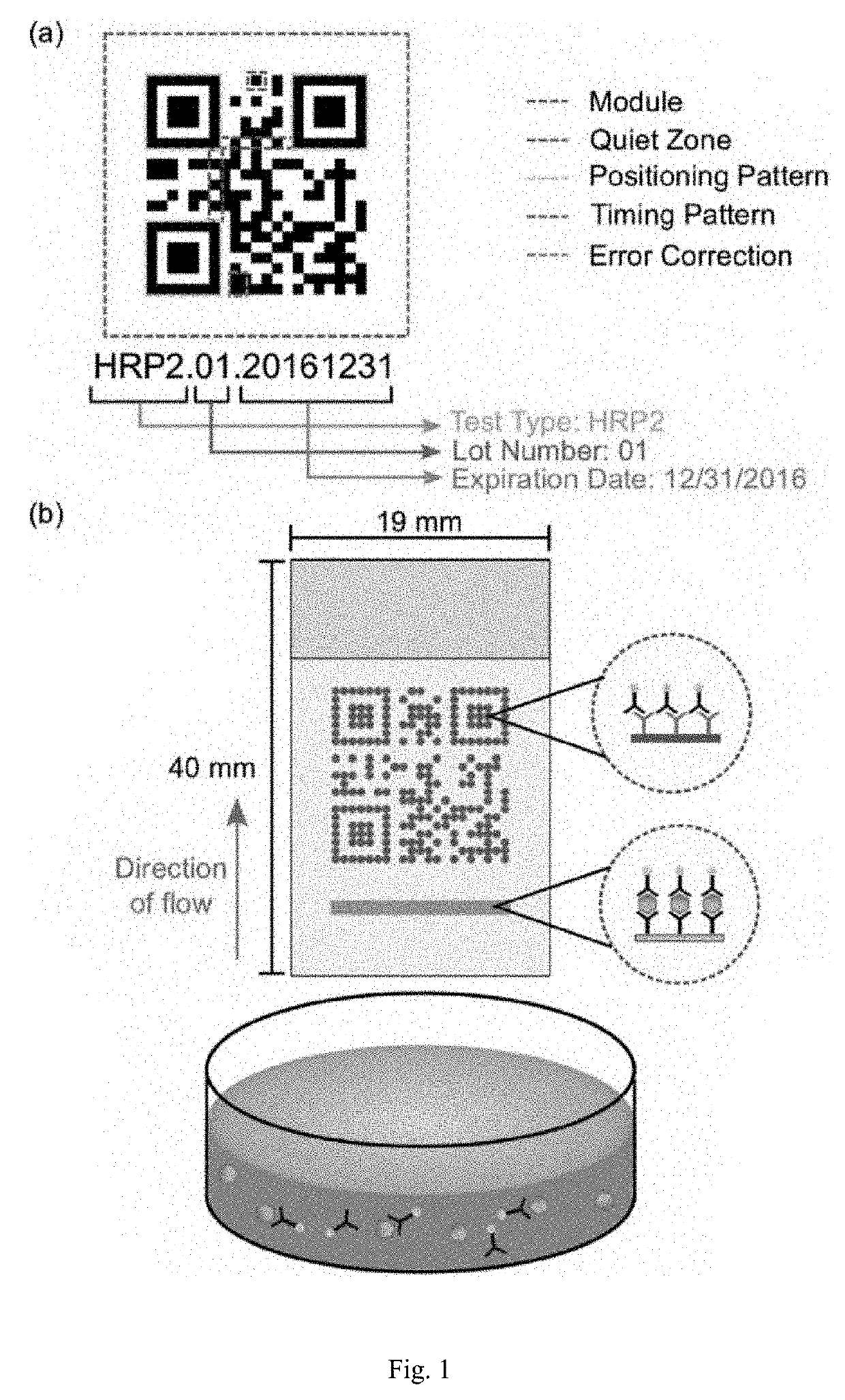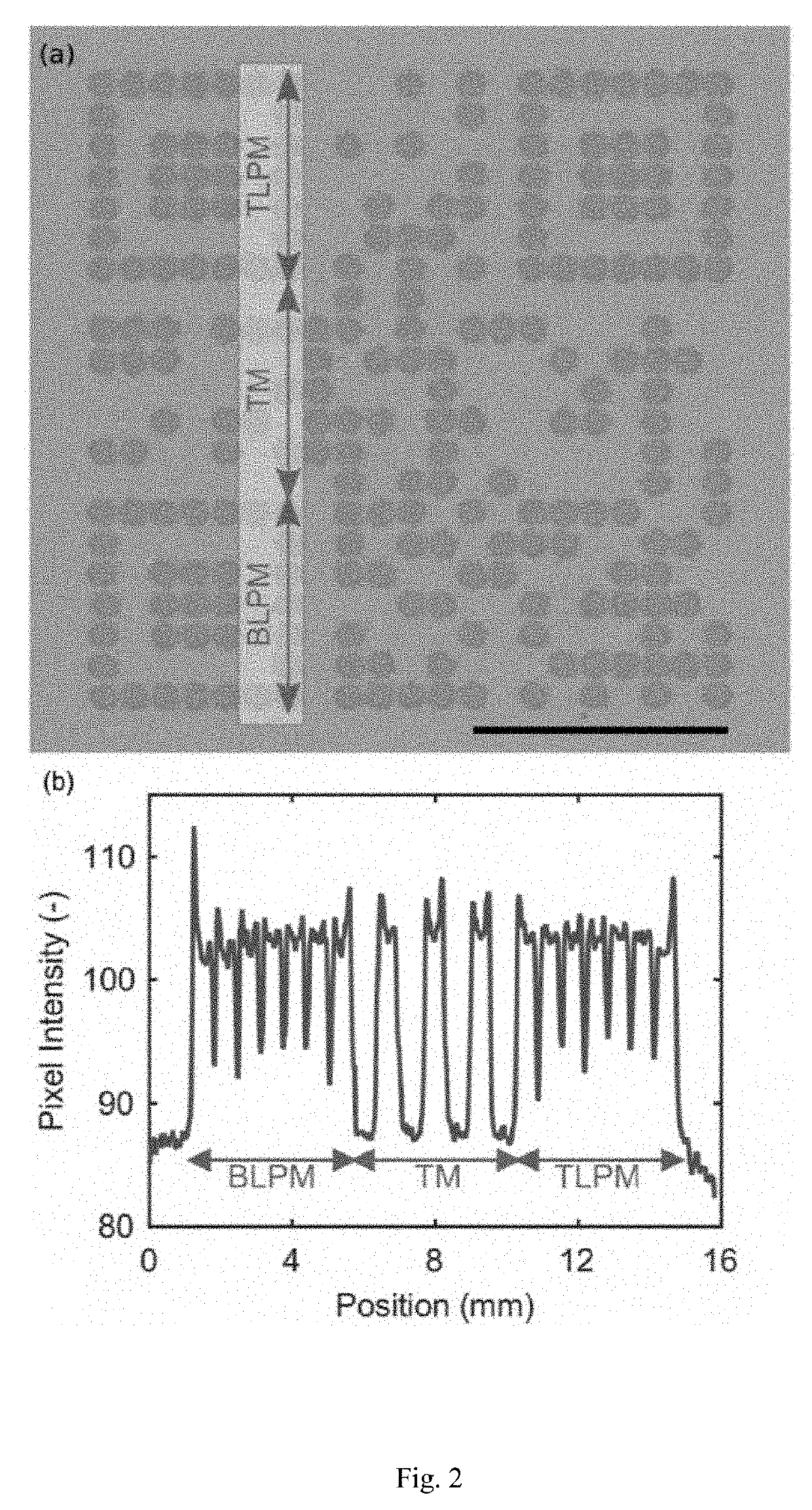Secure machine readable code-embedded diagnostic test
a machine-readable code and diagnostic test technology, applied in the field of diagnostic tests, can solve the problems of 3.3 billion people at risk of infection, 429,000 deaths, and treatment decisions are often symptom-based, and achieve the effects of maintaining the security of diagnostic test results, simplifying algorithmic image processing, and facilitating accurate quantitative image processing
- Summary
- Abstract
- Description
- Claims
- Application Information
AI Technical Summary
Benefits of technology
Problems solved by technology
Method used
Image
Examples
Embodiment Construction
[0036]The invention may be understood by referring to the following description, claims, and accompanying drawings. This description of an embodiment, set out below to enable one to practice an implementation of the invention, is not intended to limit the preferred embodiment, but to serve as a particular example thereof. Those skilled in the art should appreciate that they may readily use the conception and specific embodiments disclosed as a basis for modifying or designing other methods and systems for carrying out the same purposes of the present invention. Those skilled in the art should also realize that such equivalent assemblies do not depart from the spirit and scope of the invention in its broadest form.
[0037]Diagnostic tests employing a machine readable barcode, and more particularly a QR code, in accordance with certain aspects of an embodiment were configured following experiments designed to: 1) evaluate the QR code spatial resolution after fabrication, 2) determine th...
PUM
 Login to View More
Login to View More Abstract
Description
Claims
Application Information
 Login to View More
Login to View More - R&D
- Intellectual Property
- Life Sciences
- Materials
- Tech Scout
- Unparalleled Data Quality
- Higher Quality Content
- 60% Fewer Hallucinations
Browse by: Latest US Patents, China's latest patents, Technical Efficacy Thesaurus, Application Domain, Technology Topic, Popular Technical Reports.
© 2025 PatSnap. All rights reserved.Legal|Privacy policy|Modern Slavery Act Transparency Statement|Sitemap|About US| Contact US: help@patsnap.com



